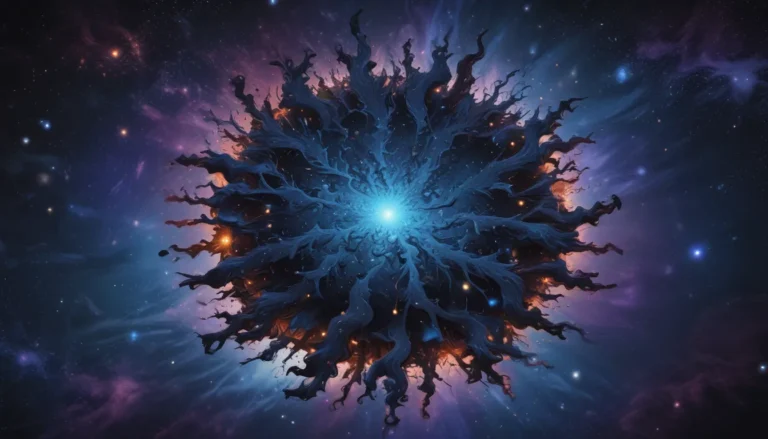The pictures we use in our articles might not show exactly what the words say. We choose these pictures to make you interested in reading more. The pictures work together with the words but don’t take their place. The words still tell you the important facts.
When we gaze up at the night sky, the stars twinkle and capture our imagination. But beyond those individual celestial bodies, there exists a grand tapestry of galaxies that are both mysterious and awe-inspiring. Galaxies, vast systems of stars, gas, and dust, hold the secrets of the cosmos and offer a glimpse into the enormity of the universe.
In this article, we will delve into the enigmatic world of galaxies and explore 10 fascinating facts that will deepen our understanding and fascination for these cosmic wonders. From the diverse shapes and sizes of galaxies to the existence of supermassive black holes at their centers, each fact will unveil a new layer of intrigue and wonder. So, buckle up and get ready to embark on a cosmic journey as we unravel the captivating mysteries of galaxies!
Understanding Galaxies: The Cosmic Building Blocks
Galaxies are vast systems composed of stars, planets, gas, dust, and other celestial objects. They come in various shapes and sizes, from spiral galaxies like the Milky Way to elliptical and irregular galaxies. These cosmic structures play a crucial role in the formation and evolution of the Universe, serving as the fundamental units of its structure.
Unveiling the Vastness of the Universe
The Universe is a vast expanse, containing billions of galaxies. Each of these galaxies houses billions to trillions of stars, creating an astronomical number of celestial bodies spread throughout the cosmos. The diversity and scale of galaxies are truly mind-boggling, showcasing the grandeur of the universe we inhabit.
Diving into Galactic Diversity
Galaxies exhibit a stunning array of shapes and sizes, ranging from spiral, elliptical, to irregular forms. Spiral galaxies, like the Milky Way, boast a distinctive spiral-arm structure, while elliptical galaxies have a more rounded or elliptical shape. On the other hand, irregular galaxies lack a defined shape and present a more chaotic appearance, adding to the cosmic tapestry of diversity.
Uncovering Galactic Secrets: Supermassive Black Holes
At the heart of many galaxies lie supermassive black holes, dwarfing the mass of our Sun by millions or even billions of times. These black holes exert a powerful gravitational pull on the stars around them, shaping the structure and dynamics of their host galaxies. They represent a fascinating enigma of the cosmic realm, contributing to the grandeur and mystery of galaxies.
Galactic Motion and Interactions
Galaxies are dynamic entities, constantly moving and interacting with each other. Through collisions, mergers, and interactions, new stars are born, and the shapes of galaxies are reshaped over vast periods of time. These interactions play a pivotal role in the evolution of galaxies, highlighting the intricate dance of celestial bodies in the cosmos.
Envisioning the Immense Scale of Galaxies
While galaxies may be bound together in clusters and superclusters, the distances between individual galaxies remain incredibly vast. Light takes billions of years to travel from one galaxy to another, underscoring the immense scale of the Universe and the breathtaking expanse of cosmic distances.
Unraveling the Tapestry of Galaxies through Time
Galaxies vary in age, with some dating back to the early epochs of the Universe as primordial structures. Others, like our Milky Way, have formed more recently, evolving and transforming over billions of years. The age diversity among galaxies offers a glimpse into the rich history and evolution of the cosmos.
Shedding Light on Dark Matter in Galaxies
Galaxies are not just composed of visible matter but also contain a significant amount of dark matter. This mysterious substance, though invisible, exerts a gravitational influence on visible matter, contributing to the observed behavior of galaxies. Dark matter remains an intriguing puzzle awaiting further exploration and understanding.
Witnessing the Power of Active Galaxies
Some galaxies, known as active galaxies, emit powerful jets of energy extending across thousands of light-years. Fueled by supermassive black holes at their centers, these energetic jets release vast amounts of radiation into space, showcasing the dynamic and intense phenomena occurring within galaxies.
Embracing the Quest for Understanding
Studying galaxies provides invaluable insights into the origins and evolution of the Universe. By dissecting their structure, composition, and behavior, scientists unravel the mysteries of galactic formation, evolution, and their contributions to the cosmic tapestry. Each new discovery in the realm of galaxies adds another piece to the puzzle of the universe.
Conclusion: The Enigma of Galaxies
In conclusion, galaxies stand as enigmatic cosmic structures that continue to captivate the minds of scientists and astronomers alike. From their diverse shapes and sizes to their mysterious dark matter compositions, galaxies hold a wealth of secrets waiting to be uncovered. As we peer into the vast expanse of the universe, the countless galaxies within it remind us of the boundless exploration that lies beyond our planet. Let us embrace the enigma of galaxies and embark on a never-ending journey of knowledge and wonder, discovering the marvels of the cosmos one galaxy at a time.
FAQs: Exploring Galaxy Knowledge
- What is a galaxy?
-
A galaxy is a massive system of stars, planets, gas, dust, and dark matter bound together by gravitational forces, serving as the building blocks of the universe.
-
How many galaxies are there in the universe?
-
It is estimated that there are at least 100 billion galaxies in the observable universe, showcasing the vastness and diversity of celestial structures.
-
What are the different types of galaxies?
-
The main types of galaxies include spiral, elliptical, and irregular forms, each presenting unique shapes and characteristics within the cosmic landscape.
-
What is dark matter in galaxies?
-
Dark matter is a mysterious substance that exerts gravitational forces on visible matter, playing a crucial role in holding galaxies together and contributing to their overall mass.
-
How do galaxies form?
- Galaxies form through the gravitational interactions and mergers of gas and dust, gradually assembling into the vast cosmic structures we observe in the universe.
As we continue our quest for knowledge and exploration, may the mysteries of galaxies inspire us to delve deeper into the wonders of the cosmos, unlocking the secrets of the universe one galaxy at a time.






